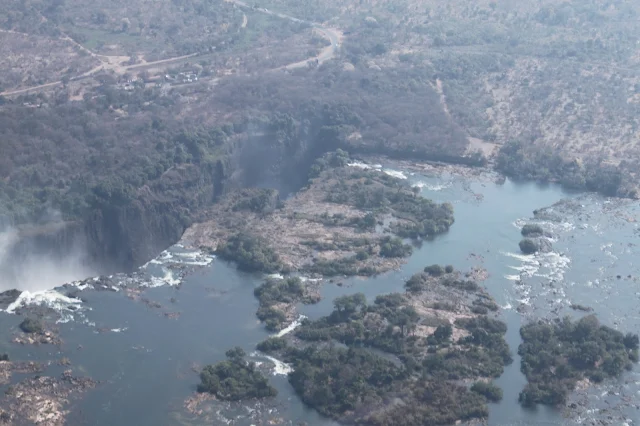Haze, no matter how you describe it, has both an immediate and lingering impact on individuals who breathe in the extreme additional layer of unhealthy particulates into their human body, respiratory ducts and health system. No one, given a choice, wants to breathe in such high risk pollutants that can aggravate in a negative way already pre-existing vulnerabilities. Today in the modern world, in the 21st century, millions of people still have to put up with this attack on their health, partly because of their choice of residence, partly because of embedded human and political non-cooperation and partly because of entrenched interests that are willing to sacrifice health standards. The current acute level of haze that has overtaken Singapore Island and part of the territories of Thailand, Indonesia and Malaysia just underlines the fact that the environment is truly a shared resource - and that we only have one Blue Planet to nurture and take care of.
Such haze like particles normally arise in intensity from natural calamities, like volcanic explosions, wind storms and earth quakes. For a phenomenon like the Indonesian sourced haze to occur almost every year since 1991, it speaks of volumes in the lack of willingness to resolve the matter, especially when it is man-made. The South-east Asian topography hits rich natural resources an lies at the trading routes of world commerce, so it has invariably attracted huge migration numbers especially in the past thousand years, from the Indian sub continent, from east Asia and amongst its various islands and shores themselves. In an age of mature and innovative human inventions and high standard of living, it breaks my heart as to why nothing effective has been carried out to reduce or resolve this occurrence of major hazes.
Haze is a label that was coined to relate to visibility but now its effects go beyond those of navigation. I could never get a straight answer as to why annual burning has to take place on a huge scale on the islands of Sumatra and Kalimantan around this time of the year. The ritual and culture of plantation soil and peat burning, I learnt from school years, is to mainly fertilise the soil in a cost -efficient manner. Previously the practice was attributed to small persistence farmers eking out a precarious existence on their small patches of land - and some fires were truly arson, done in the heat of land owning conflicts. Now I read from the media about the involvement of big business conglomerates and multi-nationals carrying out such burning, true or not, on their sizeable tracts of land, obviously bigger than Singapore Island, planted I understand with palm oil and more. Suddenly I realise why all the campaigns against palm oil cultivation does not just work for the Orangutans but also for human beings like me.
There is a term called 'bush fire reaction" used commonly in Australia - and its meaning is self evident in that one can force problems and causes of problems building up, and yet action is only taken after the problems have flared up. This aspect of human attitude has caused unnecessary suffering in historical events. The Singapore Government is an unusual player in having a great urgency in planning, risk management, taking remedial action and practising continuity strategy. However the Republic is surrounded by countries with Governments who have a different emphasis from theirs. Even if one calls the fire brigade after a break out, it can be too little, too late - and post bush fire management is then subject tot heresy of prevailing winds, occurrence of big rainfall and thunderstorms and hope.
Do the ill effects of such an acute haze actually reduce by keeping one's self indoors, with windows shut, air conditioners whizzing and Ion promoting machines switched on? Does wearing of high filter nose masks actually make one feel good psychologically and nothing more? The first symptoms that one is not reacting well can come with eye, skin, throat and nose irritation. Those with asthmatic pre-conditions have to be more mindful and take extra precautions. Human behaviour tends to withdraw under such confronting matters. Negative long term effects, probably not visible immediately, affect the heart and lungs. Human beings do not want to go outdoors, or minimise their travelling, or have been advised to suspend their economic-related activities - and you can imagine the rest of the story, the multiplier effect, the down turn in well being on all fronts.
Once the current haze goes away, individuals affected have to consider improving their nutrients and life style to strengthen their lungs, heart, ear and throat systems.
Parts of the south-east Asian sky look like in a freeze frame - it could be 1997 or 2013 again.
In legends of lore, when a society seems to face multiple incidences of varying problems within a short time, back in Greece, Rome or China, that was a significant sign from the Gods that the specific society or its leadership has done something seriously wrong. In this modern age, do we ignore this old adage at our own peril, or do we wake up sufficiently to resolve serious matters, before it is too late.
If I dare be so bold, what applies in discussion of the acute haze above can also echo in the current management of the increased severity of the outbreak of Dengue Fever for many years now.


















































